One of the best ways to grow healthy, strong tomato plants that produce loads of juicy fruit is to put down a thick, protective coat of mulch around your plants as soon as you plant them. But when mulching, what you mulch with can make a huge difference in just how successful your plants are!
There are so many different benefits that can come along with using mulch around your tomato plants. In fact, all of the plants in your garden can take advantage of the improvements that using mulch brings along with it.
From helping to suppress weeds to controlling soil erosion, mulch is an important aspect of building healthy and organically rich soil. Mulch also helps to regulate the soil’s temperature and retain moisture. All while helping to prevent soil-borne diseases from attacking plants too.
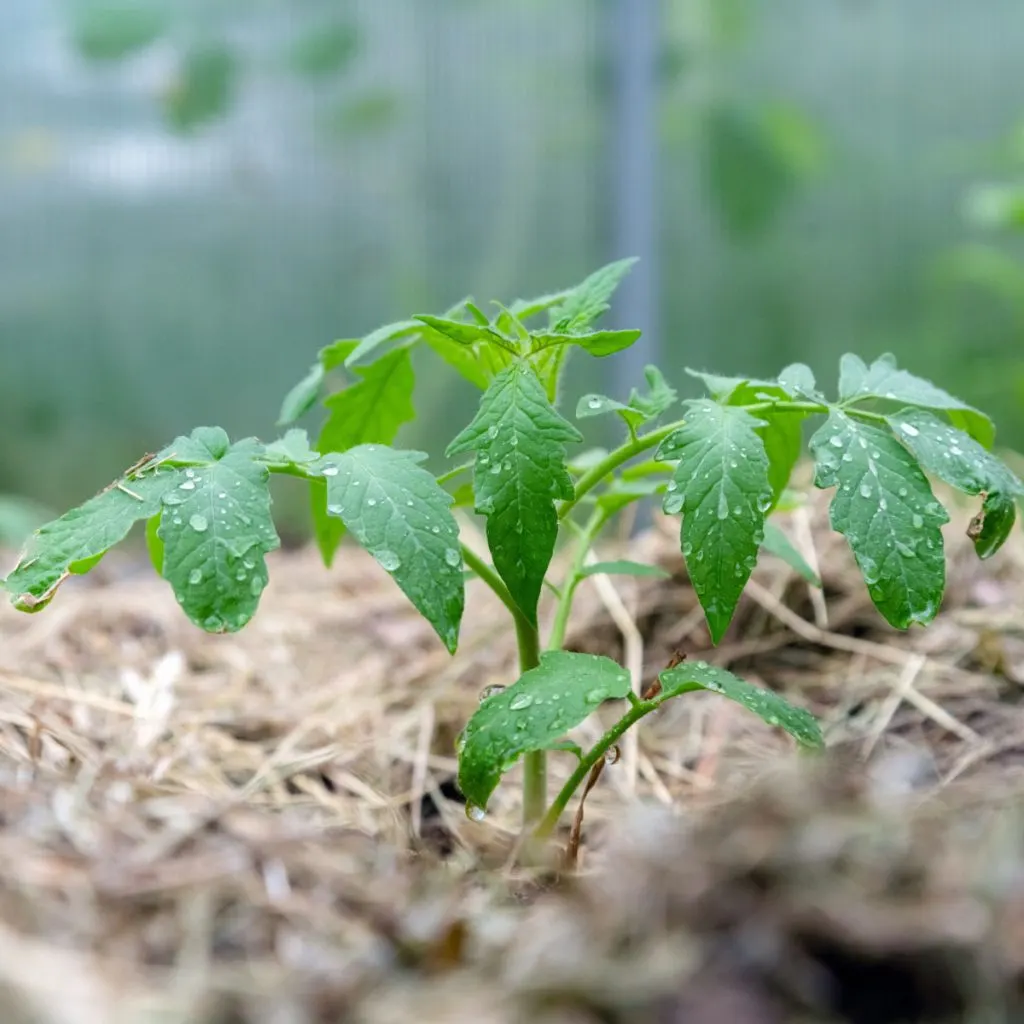
But it’s not just the soil that can benefit from all that mulch. Using the right kind of mulch can also help to power your tomato plants as well!
With that in mind, here’s a look at the best types of mulches to use around your tomato plants this year so that you can enjoy a successful growing season while making less work for you in the long run!
The Best Mulch To Use For Tomato Plants – 4 Great Mulches To Protect & Power Your Plants This Year!
1. Straw
Straw is one of the best types of mulches to use around your tomato plants. It is also one of the easiest to apply and spread due to being so lightweight. It allows you to build thick layers of protection against some of the worst soil-borne diseases that affect tomatoes in very little time. See, “How To Keep Tomato Plants From Getting Blight”.
You can actually use straw in any part of your garden space. From adding to your walking rows to building it up around plants, it is a perfect organic mulch.
One great benefit of using straw is that it breaks down slowly over time. This helps to add loads of organic matter back into the soil without the need to reapply throughout the same growing season.
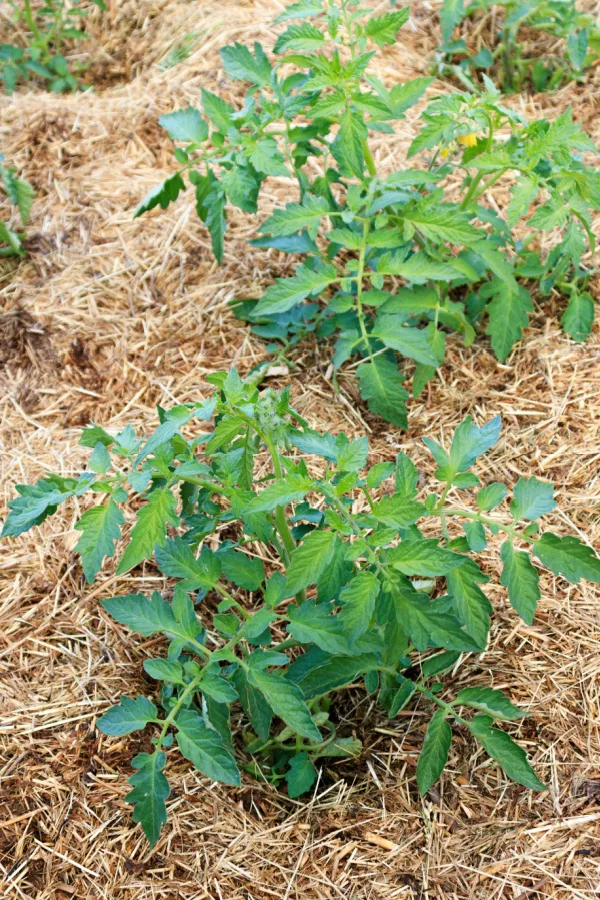
Depending on your location, straw can be fairly inexpensive to purchase. This is especially the case if you can purchase it directly from the source. However, purchasing it commercially or in some locations can cost more money. Affiliate Product Link: Gardener Select Seeding Straw
Straw vs Hay – The Best Mulch To Use For Tomato Plants
The key to using straw as mulch in your garden successfully is to make sure you get the right type of product. Straw is the leftover dried stalks of grain after the chaff and seed heads have been removed.
Some people often confuse straw with hay, but they are two completely different products. While straw is only the dried stalks, hay is made up of dried grasses or legumes – seeds and all. People often use hay to feed livestock whereas straw has several different applications, including mulch.
You do not want to use hay around your tomato plants. Using hay is essentially introducing hundreds if not thousands of grass and other seeds into your garden space. Always make sure that the straw you purchase has indeed separated the seed heads from the stalks.
2. Grass Clippings – The Best Mulch To Use For Tomato Plants
One of the best resources to use as garden mulch around your tomato plants is right below your feet – literally! And the best part of all is that it is totally free to get!
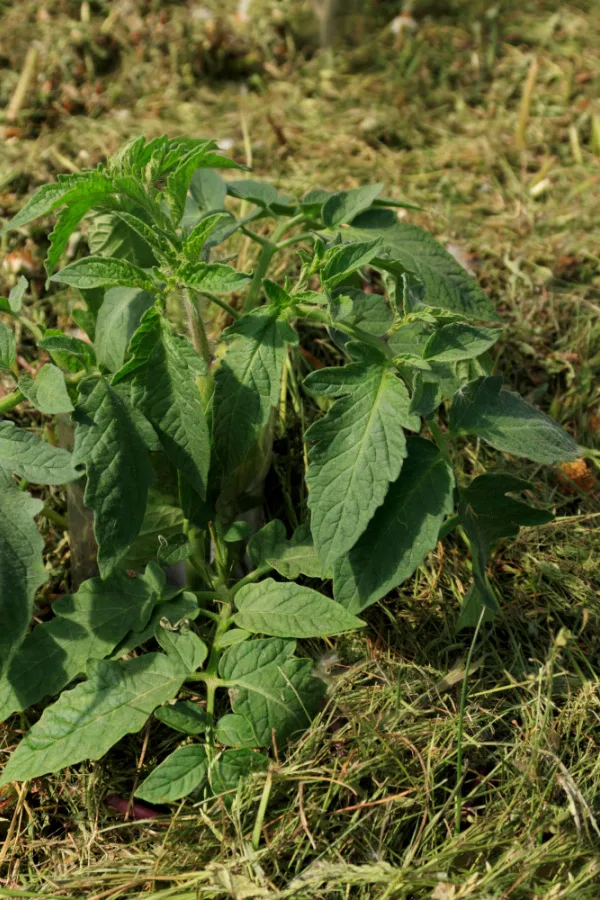
A thick layer of grass clippings is perfect for helping to suppress weeds around your tomato plants. Any competing weeds steal nutrients and resources from your tomato plants and should be removed from your garden setting. Instead of needing to pull individual weeds, the grass clippings suppress those weeds and prevent them from germinating in the first place.
Fresh grass clippings can also leach valuable nitrogen into the soil after they are first applied to the soil. And unlike straw, grass clippings break down quickly adding tons of organic matter to the soil in short order.
However, because they break down so fast, you might need to add a second or third application during the growing season. You always want to maintain a thick 4 to 6-inch layer of whatever type of mulch you use.
So the next time you mow your lawn, rake or gather up your grass clippings to use as a much around your tomato plants. Just don’t use clippings from any lawn that has been sprayed with any type of chemical or sprays. Also, leave a couple of inches around each tomato plant’s stems.
3. Shredded Leaves – The Best Mulch To Use For Tomato Plants
Another great mulch to use around tomato plants is shredded leaves. It’s another one of those resources that is easy to gather in large amounts and is usually free for the taking.
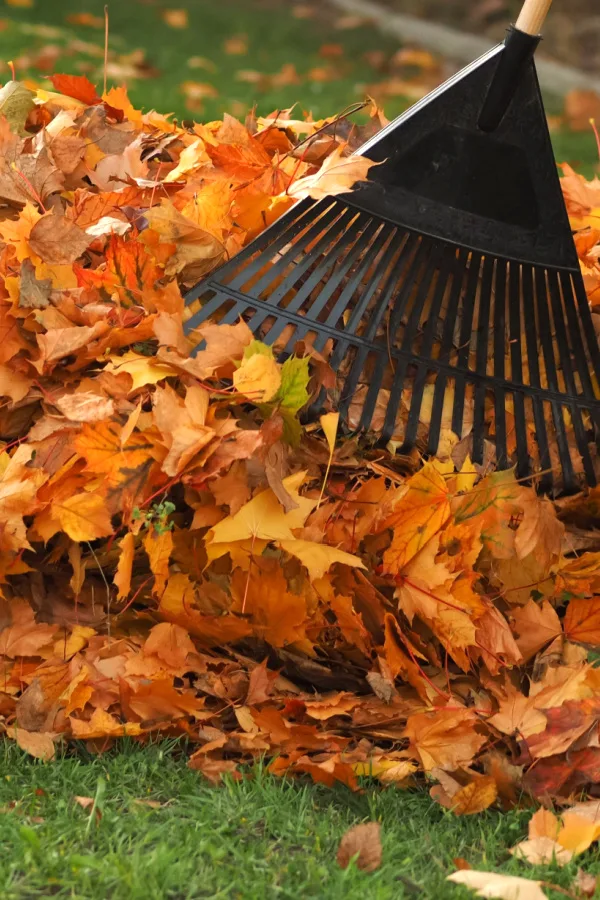
While whole leaves are excellent for creating an almost solid mat for suppressing weeds, you shouldn’t use them around vegetable plants. Save using whole leaves for your walking rows.
Instead, you need to shred your leaves prior to using them as mulch. Shredded leaves still allow water and air to get to the roots around your plants while still keeping weeds at bay. A couple of passes with your lawn mower will make quick work of shredding leaves.
The best types of tree leaves to use are from ash, beech, birch, maple, and all fruit trees. Oak leaves and green pine needles can cause the soil’s pH balance to change over time and in large quantities. Also, avoid using any leaves from walnut trees.
4. Compost – The Best Mulch To Use For Tomato Plants
When it comes to compost and gardening, most people associate it with being an amazing soil amendment. It works to add plenty of organic matter to the soil while boosting the nutrients at the same time.
However, you can also use compost to help mulch tomato plants. The key is to use it correctly in order to get the most benefits. To use, add about a two-inch layer of finished compost around the root zone of your tomato plants. Spread the compost out about 12 to 18 inches around each plant.
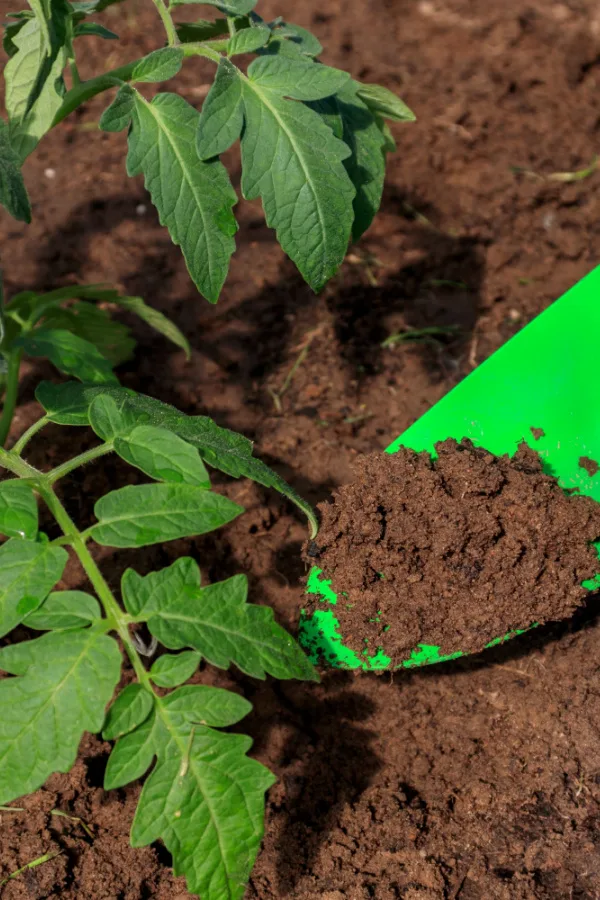
Now, every time it rains or you water your tomatoes, the compost acts as a slow-release fertilizer. The nutrients within the compost will slowly leach down to the roots of the tomato plants. This adds a boost of power right where they need it the most.
The key to using compost as a mulch for tomatoes is to use it in conjunction with one of the above types of mulches. As good as the compost is for boosting the nutrients in the soil, it can’t do anything to protect the plants from weeds.
To fix this, simply add 4 to 5 inches of another type of mulch on top of the compost. Now your tomatoes will be fully protected and on the right path for growing healthy, strong, and productive tomatoes this year!
I Grow Tomatoes
Follow Our Facebook Page For Even More Great Tomato Growing Tips! I Grow Tomatoes Facebook Page
I Grow Tomatoes is a website created for those who love all things about tomatoes – from planting and growing – to cooking and canning! We publish two articles every week, 52 weeks a year. Sign up today to follow via email! This article may contain affiliate links.
